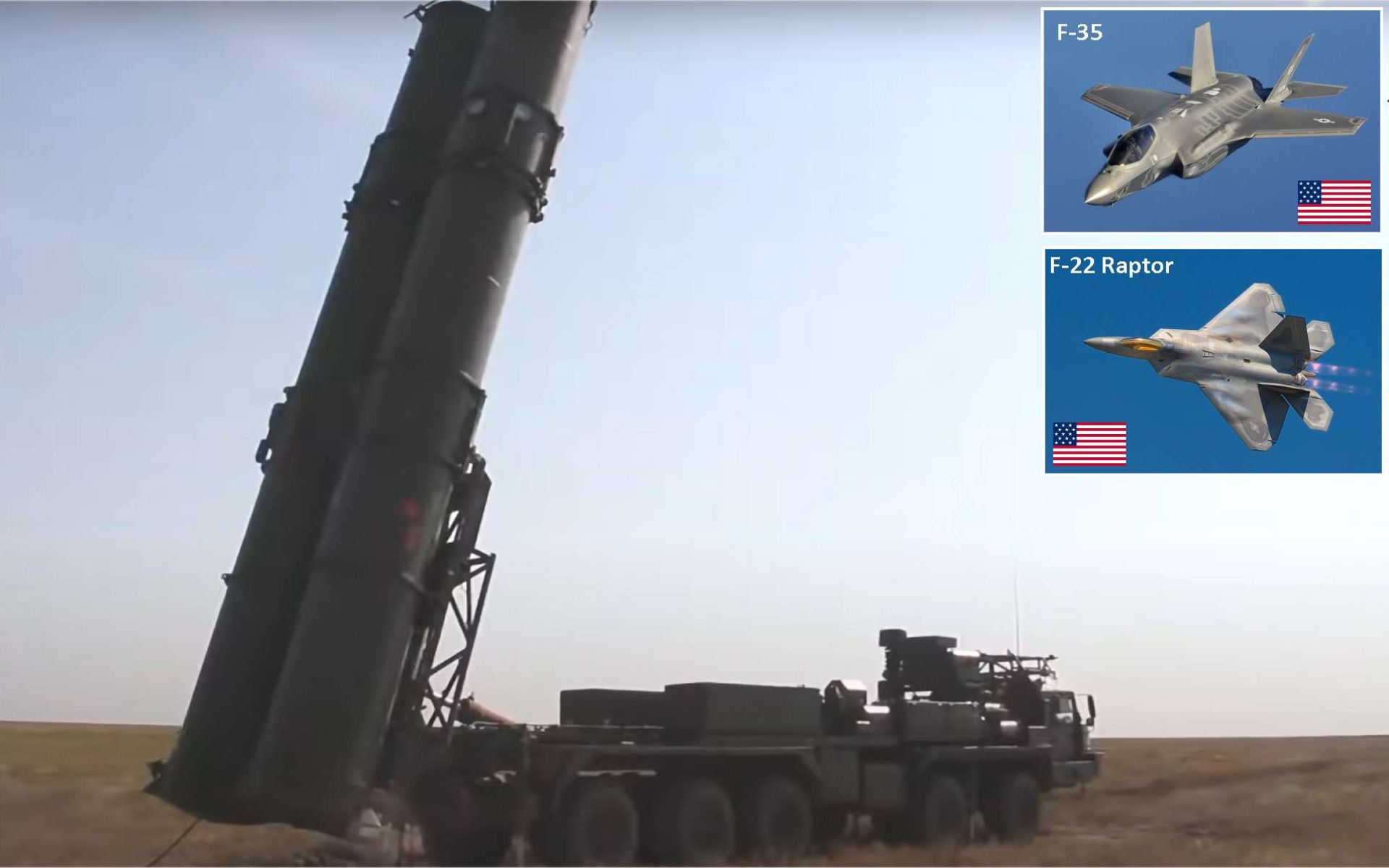Breaking News
Analysis: Russian S-500 Air Defense System Poses New Threat to American F-22 and F-35 Fighter Aircraft.
The Russian military has announced the deployment of its latest generation air defense missile system, the S-500, which poses a potential new threat to American F-22 Raptor and F-35 fighter aircraft. The deployment follows rigorous testing, as reported by the Russian Defense Ministry.
Follow Army Recognition on Google News at this link

The new Russian-made S-500 air defense missile systems will be able to intercept stealth fighter aircraft such as the American F-35 or F-22 Raptor. (Picture source: Russian MoD)
The S-500 air defense missile system, considered a significant upgrade from its predecessor, the S-400, has been positioned in a critical strategic location. This move comes after Russia lost parts of several S-400 air-defense batteries to Ukraine’s American-made Army Tactical Missile System (ATACMS) rockets, highlighting vulnerabilities in its existing air defense infrastructure.
In response to these losses, Russia has deployed parts of its first, and currently only, S-500 air-defense system. According to Kyrylo Budanov, Ukraine's intelligence chief, the S-500 is now operational, protecting the Kerch Strait from a site in Russian-occupied Crimea. The Kerch Bridge, spanning this strait, is a crucial supply line for the Kremlin, facilitating the transportation of resources into occupied southern Ukraine.
The S-500's advanced capabilities include targeting hypersonic missiles, aircraft, and even low-orbit satellites, significantly enhancing Russia's defensive posture. The system's deployment in Crimea underscores its strategic importance, as it safeguards a vital corridor for Russian military logistics.
As tensions continue to escalate, the S-500's presence in the region represents a notable shift in the balance of air defense power, potentially altering the dynamics of aerial engagements involving cutting-edge American fighter jets. The international community closely monitors these developments, recognizing the broader implications for regional security and military strategy.
The S-500 Prometheus air defense system is a cutting-edge advancement in Russian military technology, designed to address the evolving threats posed by modern aerial warfare. One of its most notable features is its ability to engage a wide variety of targets, including stealth aircraft, hypersonic missiles, and low-orbit satellites.
The S-500's radar and targeting systems are among the most advanced in the world, providing a detection range of up to 600 kilometers (373 miles). This long-range capability allows the system to identify and track targets well before they enter its engagement zone, providing a significant tactical advantage. The radar can operate in multiple modes, including tracking and engagement simultaneously, ensuring continuous coverage and rapid response to emerging threats.
In terms of engagement, the S-500 is equipped with several types of missiles tailored for different targets. These missiles can reach altitudes of up to 200 kilometers (124 miles), enabling the S-500 to intercept ballistic missiles during their mid-course phase and engage low-orbit satellites. This high-altitude capability is crucial for countering modern threats that operate at various altitudes and speeds.
The system's ability to target stealth aircraft, such as the American F-22 Raptor and F-35 Lightning II, is particularly significant. The S-500 employs advanced radar technology that can detect low-observable aircraft, which are designed to evade traditional radar systems. By using multiple radar frequencies and sophisticated signal processing, the S-500 can identify and track stealth aircraft, reducing their effectiveness in penetrating defended airspace.
Moreover, the S-500 features rapid launch capabilities and a high rate of fire, allowing it to engage multiple targets simultaneously. This makes it highly effective in a saturated threat environment, where numerous incoming threats must be addressed quickly and efficiently.
The integration of the S-500 into Russia's air defense network enhances the overall strategic defense posture by providing a robust shield against a diverse range of aerial threats. Its deployment in critical areas, such as the Kerch Strait, underscores its strategic importance in protecting vital infrastructure and maintaining air superiority.
In summary, the S-500 Prometheus is a formidable air defense system with the capability to detect, track, and engage a wide array of targets at various altitudes and ranges. Its advanced radar, missile technology, and ability to counter stealth aircraft and hypersonic threats make it a significant asset in modern military defense.
The F-35 Lightning II and F-22 Raptor are two of the most advanced fighter aircraft in the world, developed by Lockheed Martin for the United States and its allies. The F-35, a multi-role stealth fighter, is designed to perform ground attack, reconnaissance, and air defense missions. It features advanced stealth technology, making it difficult to detect by radar. The F-35 is equipped with state-of-the-art sensors and avionics, including the Distributed Aperture System (DAS) and the Advanced Electronically Scanned Array (AESA) radar, providing pilots with unparalleled situational awareness and targeting capabilities. Its versatility is further enhanced by its ability to operate from conventional runways, aircraft carriers, and short take-off and vertical landing (STOVL) environments.
The F-22 Raptor, primarily an air superiority fighter, excels in achieving and maintaining air dominance. It combines stealth, supercruise, maneuverability, and integrated avionics to secure airspace against a variety of threats. The F-22's stealth design minimizes radar cross-section, allowing it to engage enemy aircraft without being detected. It is equipped with the AN/APG-77 AESA radar, which provides superior tracking and engagement capabilities. The Raptor also boasts supercruise ability, allowing it to sustain supersonic speeds without afterburners, enhancing its speed and range. Its thrust-vectoring engines and advanced flight control systems grant it exceptional agility, making it a formidable opponent in dogfights. Together, these technologies make the F-35 and F-22 among the most capable and advanced combat aircraft in the world.


























